Results
-
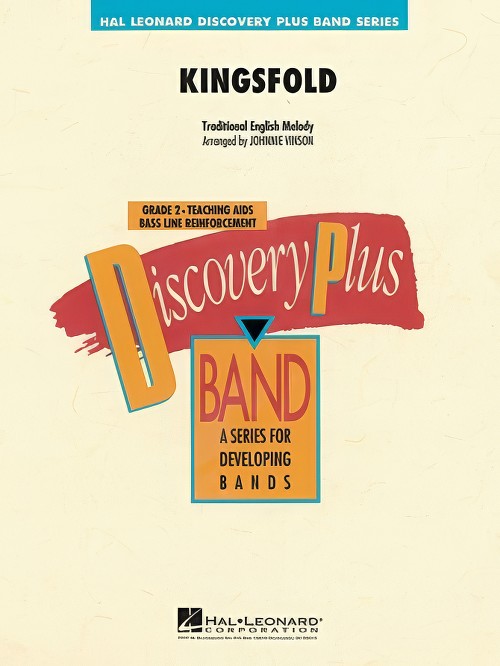 £42.50
£42.50Kingsfold (Concert Band - Score and Parts) - Vinson, Johnnie
The haunting melody of this traditional tune likely dates to the Middle Ages, and was published by British composer Ralph Vaughan Williams in the 1906 English Hymnal. Freely adapted by Johnnie Vinson in this setting for young bands, the minor melody is stated first by low clarinets and horns. The next section introduces an original theme, which is then combined with the first melody in the moving final section. Beautifully paced and scored largely in choral fashion, this is a wonderfully fresh and unique offering.
Estimated dispatch 7-14 working days
-
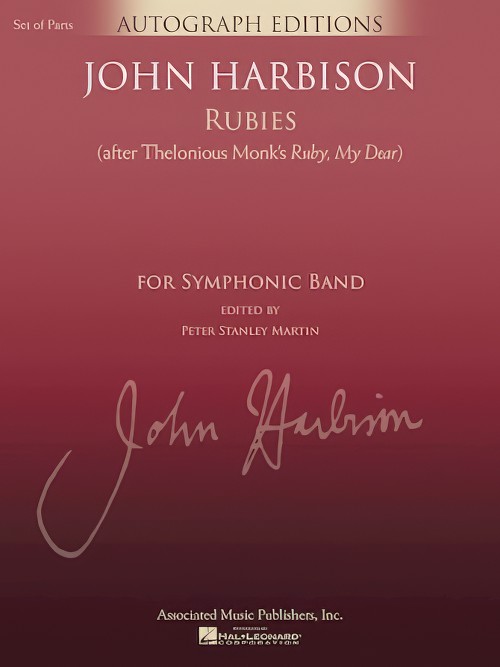 £109.99
£109.99Rubies (After Thelonious Monk's Ruby, My Dear) (Concert Band - Score and Parts) - Harbison, John - Martin, Peter Stanley
Composer John Harbison writes: "Rubies is a version of Thelonious Monk's Ruby, My Dear, which he composed while still in his teens. When I was invited by the Seattle Symphony to make a short piece reflecting my first musical passions, my thoughts were of Bach and Monk. Since I had recently made some Bach-like chorale preludes, I chose to make a version of Monk's tune, first in a chamber-musical, contrapuntal manner, then in the grand orchestral style I had always heard lurking there." Duration: 5:30 (Recorded live by the Rutgers Symphony Band - Peter Stanley Martin, guest conductor)
Estimated dispatch 7-14 working days
-
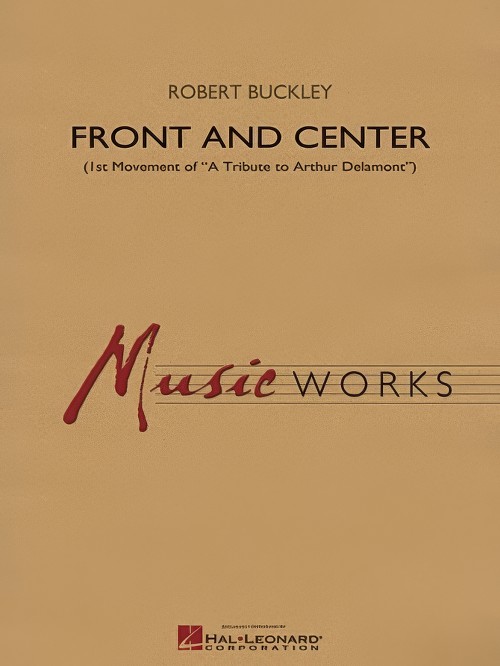 £72.99
£72.99Front and Center (Concert Band - Score and Parts) - Buckley, Robert
First Movement of A Tribute to Arthur Delamont.Famed bandmaster Arthur Delamont always started his concerts with a rousing overture, and Front and Center is in this proud tradition. In a non-stop 9/8 rhythm, this piece explodes with energy and effervescence. Full of powerful fanfares, lively melodies, driving percussion and dynamic contrasts, this exciting concert opener moves through different musical colours without ever losing its relentless drive. An exhilarating tour-de-force showcasing all sections of the band! Front and Center is the first movement of A Tribute to Arthur Delamont and was commissioned by the West Vancouver Youth Band.Duration: 3:15
Estimated dispatch 7-14 working days
-
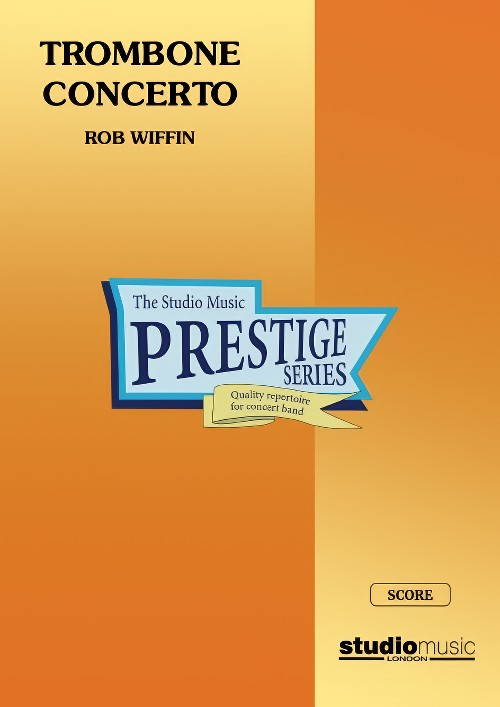 £32.95
£32.95Trombone Concerto (Trombone Solo with Concert Band - Score only) - Wiffin, Rob
The composer writes:My Trombone Concerto was commissioned by Brett Baker following an earlier piece I had written for him called Shout. The concerto was composed in Spain the summer of 2010. Once I started writing I realised this concerto was, inevitably, going to draw on my own experiences as a trombone player.The first movement was really a matter of getting the right thematic ideas and balancing the tutti and solo passages so, for formal structure, I studied the Gordon Jacob Trombone Concerto. There is a lyrical section preceding the first Allegro that owes much in spirit (but not the actual music) to The Eternal Quest, Ray Steadman-Allen's Salvation Army solo.The slow movement seemed determined to come out in the vein of a Richard Strauss song. I wanted to write ineluctably cantabile as we trombone players rarely get a chance to play the melody! There is a brief allusion to that wonderful moment when the trombone gets to sing above the orchestra in Sibelius' seventh symphony. Arthur Wilson (my teacher at college) died in the summer of 2010 so it seemed appropriate to dedicate this movement to him.The last movement is the lightest of the three in style and is slightly jazz-inflected, hopefully providing some fun for the soloist.While wanting to test the instrument, I did not set out with the intention of making the concerto difficult but there are undoubtedly challenges of technique, range and style to be met by the soloist.Recorded on Polyphonic CD QPRM161D Roman TrilogyDuration: 19:30
Estimated dispatch 7-14 working days
-
 £164.95
£164.95Trombone Concerto (Trombone Solo with Concert Band - Score and Parts) - Wiffin, Rob
The composer writes:My Trombone Concerto was commissioned by Brett Baker following an earlier piece I had written for him called Shout. The concerto was composed in Spain the summer of 2010. Once I started writing I realised this concerto was, inevitably, going to draw on my own experiences as a trombone player.The first movement was really a matter of getting the right thematic ideas and balancing the tutti and solo passages so, for formal structure, I studied the Gordon Jacob Trombone Concerto. There is a lyrical section preceding the first Allegro that owes much in spirit (but not the actual music) to The Eternal Quest, Ray Steadman-Allen's Salvation Army solo.The slow movement seemed determined to come out in the vein of a Richard Strauss song. I wanted to write ineluctably cantabile as we trombone players rarely get a chance to play the melody! There is a brief allusion to that wonderful moment when the trombone gets to sing above the orchestra in Sibelius' seventh symphony. Arthur Wilson (my teacher at college) died in the summer of 2010 so it seemed appropriate to dedicate this movement to him.The last movement is the lightest of the three in style and is slightly jazz-inflected, hopefully providing some fun for the soloist.While wanting to test the instrument, I did not set out with the intention of making the concerto difficult but there are undoubtedly challenges of technique, range and style to be met by the soloist.Recorded on Polyphonic CD QPRM161D Roman TrilogyDuration: 19:30
Estimated dispatch 7-14 working days
-
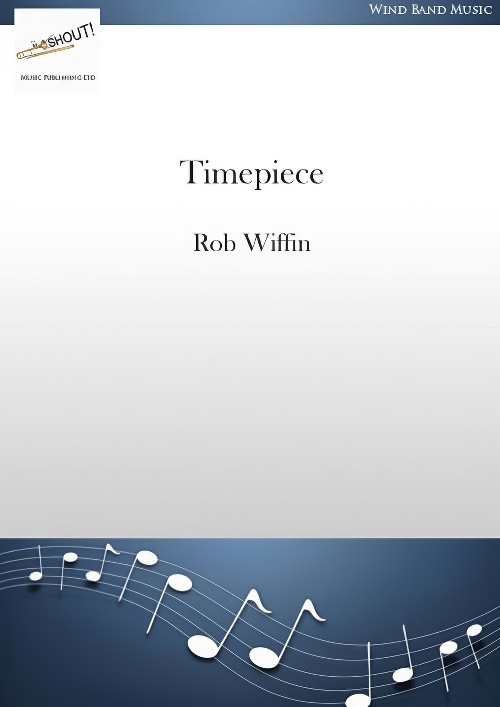 £79.95
£79.95Timepiece (Concert Band - Score and Parts) - Wiffin, Rob
Timepiece is a challenging work full of driving rhythms and relentless energy. It started life as the first movement of The Sands of Time, a commissioned work for clarinet choir. Because of the time limits of the commission, Wiffin could not develop the material as much as he had wanted to. He rescored it for wind band and included it as the first movement of a suite, but it did not sit well there because of its difficulty. Now re-worked and extended, the driving rhythms and many changes of time that give the piece its name are now balanced by a quieter, tranquil central section in 3/4. It is not easy, but most of the difficulty lies in the reading of the music rather than in any particular technical problems. It is recorded on on the RAF CD, Music in the Air.Duration: 6.15
Estimated dispatch 7-14 working days
-
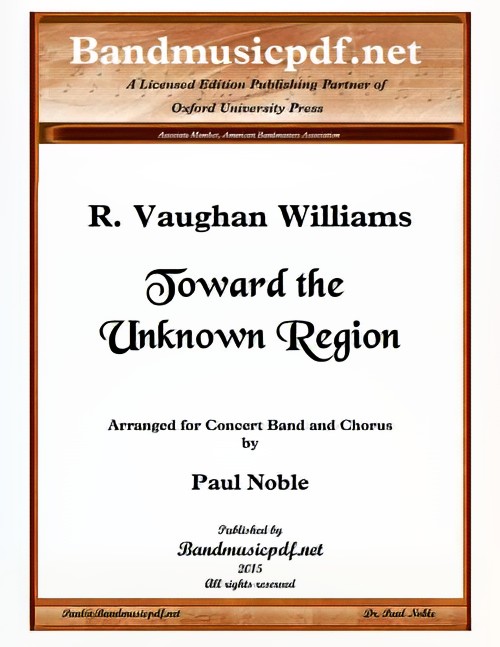 £250.00
£250.00Toward the Unknown Region (Choir with Concert Band - Score and Parts) - Williams, Vaughan - Noble, Paul
This magnificent setting of Walt Whitman's poem established Vaughan Williams's reputation as one of the leading composers of the twentieth century. The idea of a spiritual journey - the passage of the soul from darkness to light, Toward the Unknown Region - is central to the text and fully reflected in the music. Beginning softly and simply, the music follows the text of the poem, building through a Wagnerian chromaticism toward a bold and dramatic climax. This was Vaughan Williams's first major choral piece, and its obvious inspirational qualities made it a success from the first. This arrangement for Concert Band and Chorus adheres to the original orchestration. The choral parts are included in the conductor's score as a reference, but are not part of the set. The choral parts are available for purchase seperately.
Estimated dispatch 7-14 working days
-
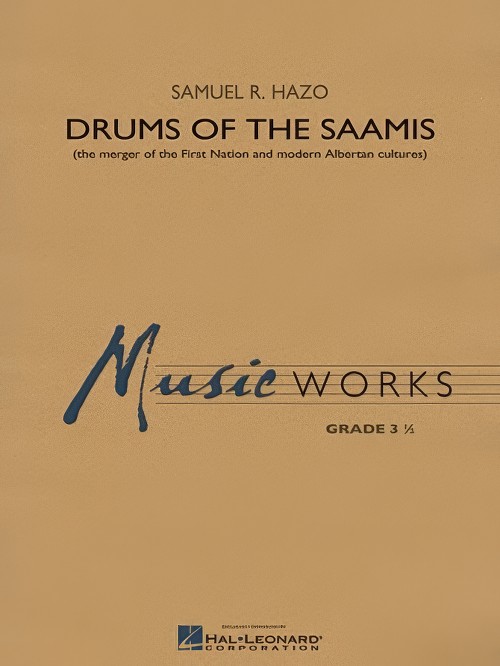 £72.99
£72.99Drums of the Saamis (Concert Band - Score and Parts) - Hazo, Samuel R.
Drums of the Saamis was commissioned by the Medicine Hat Concert Band Society of Medicine Hat, Alberta, Canada. The piece chronicles the merger of the First Nation (first natives) and modern Albertan cultures. The opening tribal drums followed by the haunting melody simulating the traditional wooden flute comprise two themes that are the foundation for the entire piece. Both elements are developed, varied and enhanced throughout as the listener senses the increasing influence of modern day Alberta through the use of modern sounding chords and rhythms. By the end, the marriage of the old and the new is complete. This powerful work closes as it began; a restatement of themes representing the musical and historical foundation of the region.Duration: 5:00
Estimated dispatch 7-14 working days
-
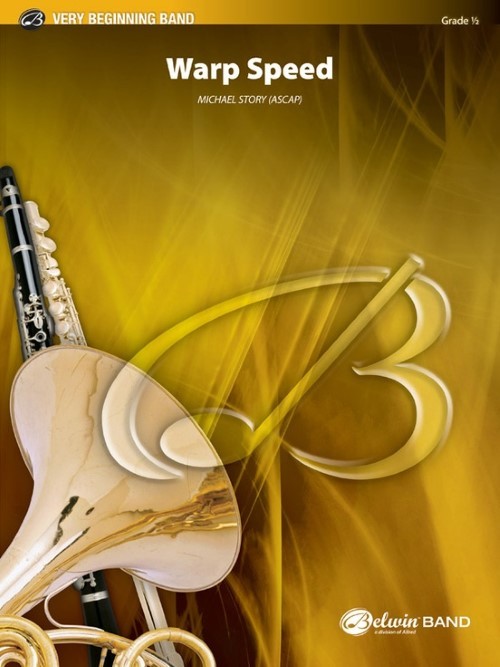 £46.95
£46.95Warp Speed (Concert Band - Score and Parts) - Story, Michael
Created for students in the end of their first year in band utilizing the first several notes presented in most first-year methods, the speed of the warp drive is up to you! A tremendous opportunity to teach rhythm, pitch and ensemble precision with this high energy original work.Duration: 1:30
Estimated dispatch 7-14 working days
-
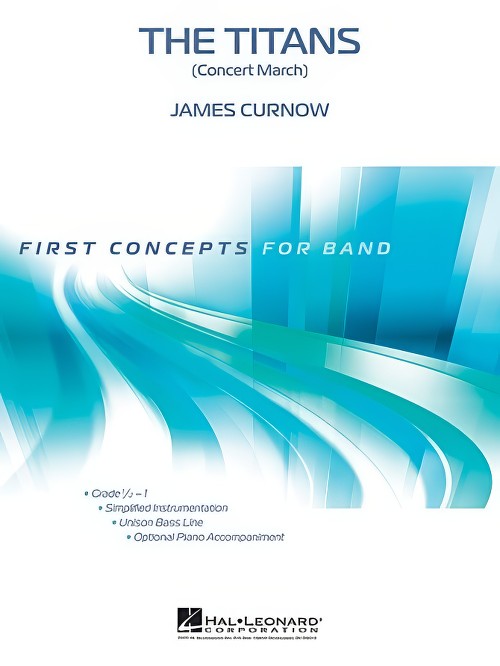 £38.50
£38.50The Titans (Concert Band - Score and Parts) - Curnow, James
Here is a solid, yet contemporary-sounding march for first year players. This powerful piece is carefully scored with interesting parts for all players. First Concept works included simplified instrumentation, unison bass line, optional advanced snare drum part and an optional piano accompaniment.Duration: 2:15
Estimated dispatch 7-14 working days
